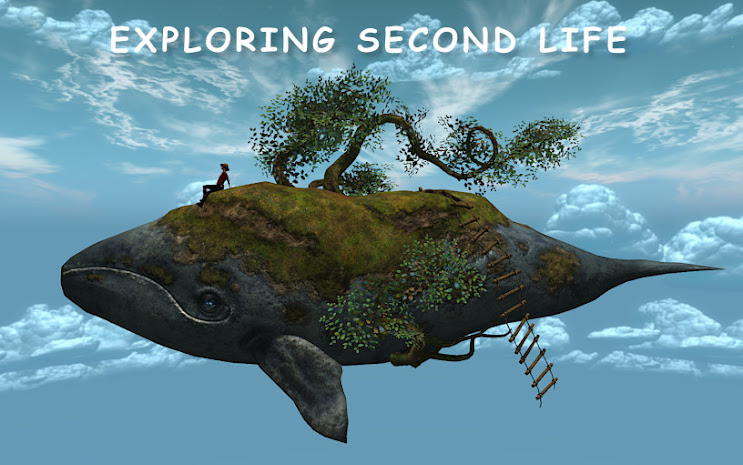Example of a slurl:
http://maps.secondlife.com/secondlife/Ukanipo/78/77/28
Read this as 'Ukanipo' is the Region, and 78/77/28 are the coordinates in the Region.
In Second Life, teleport locations can also be shown as landmarks.
 |
| Examples of landmarks |
 Reading the above map. I have marked the Region of Ukanipo with a white line. Notice that the Region name, Ukanipo, is in the lower left corner. The legends on the upper right of the map show what some of the symbols on the map mean. The coordinates show exactly where I was when I made the screen shots. If you clicked on the "Unofficial Tourist Information" landmark shown above you would land at the location shown. Notice that the location coordinates are not just for longitude and latitude, but also for altitude. You can see rivers and water features, roads and rivers, and....yes...a volcano. If I had clicked the 'show land for sale' the sale parcels would show as yellow patches.
Reading the above map. I have marked the Region of Ukanipo with a white line. Notice that the Region name, Ukanipo, is in the lower left corner. The legends on the upper right of the map show what some of the symbols on the map mean. The coordinates show exactly where I was when I made the screen shots. If you clicked on the "Unofficial Tourist Information" landmark shown above you would land at the location shown. Notice that the location coordinates are not just for longitude and latitude, but also for altitude. You can see rivers and water features, roads and rivers, and....yes...a volcano. If I had clicked the 'show land for sale' the sale parcels would show as yellow patches.The map does not show Second Life in real time. That is why we can never find the Giant Squid.
In either case, to teleport, click on the slurl or landmark. (It is a good idea to always be in 'flying' mode when you do.).
There is a 'Landmarks" section in your inventory, and it is a good idea to save the landmarks for places you like. As of July 14, 2019 there were 24,167 public and private Regions, and each Region is 65,536 square meters. It is easy to get lost. In a pinch you can check your 'teleport history' for places you have visited recently.
By the way, although some people call Regions 'sims', try to remember to call them 'Regions'.
Copied directly from the Wiki definition of 'sim':
Simulator, which can mean either:
- Sim node (or sim host), the physical server machine simulating one or more regions.
The latter usage is more precise, because multiple processes may run on a single server CPU. In common usage, "sim" may also be used to mean region, though this meaning is deprecated because it is ambiguous. Most accurately, a region is simulated by a sim process running on a sim node.
- Sim processes, the processes running on the server machines that simulate regions.
More information on maps in Second Life.


Are you tired of being human, having talented brain turning to a vampire in a good posture in ten minutes, Do you want to have power and influence over others, To be charming and desirable, To have wealth, health, without delaying in a good human posture and becoming an immortal? If yes, these your chance. It's a world of vampire where life get easier,We have made so many persons vampires and have turned them rich, You will assured long life and prosperity, You shall be made to be very sensitive to mental alertness, Stronger and also very fast, You will not be restricted to walking at night only even at the very middle of broad day light you will be made to walk, This is an opportunity to have the human vampire virus to perform in a good posture. If you are interested contact us on Vampirelord7878@gmail.com
ReplyDelete